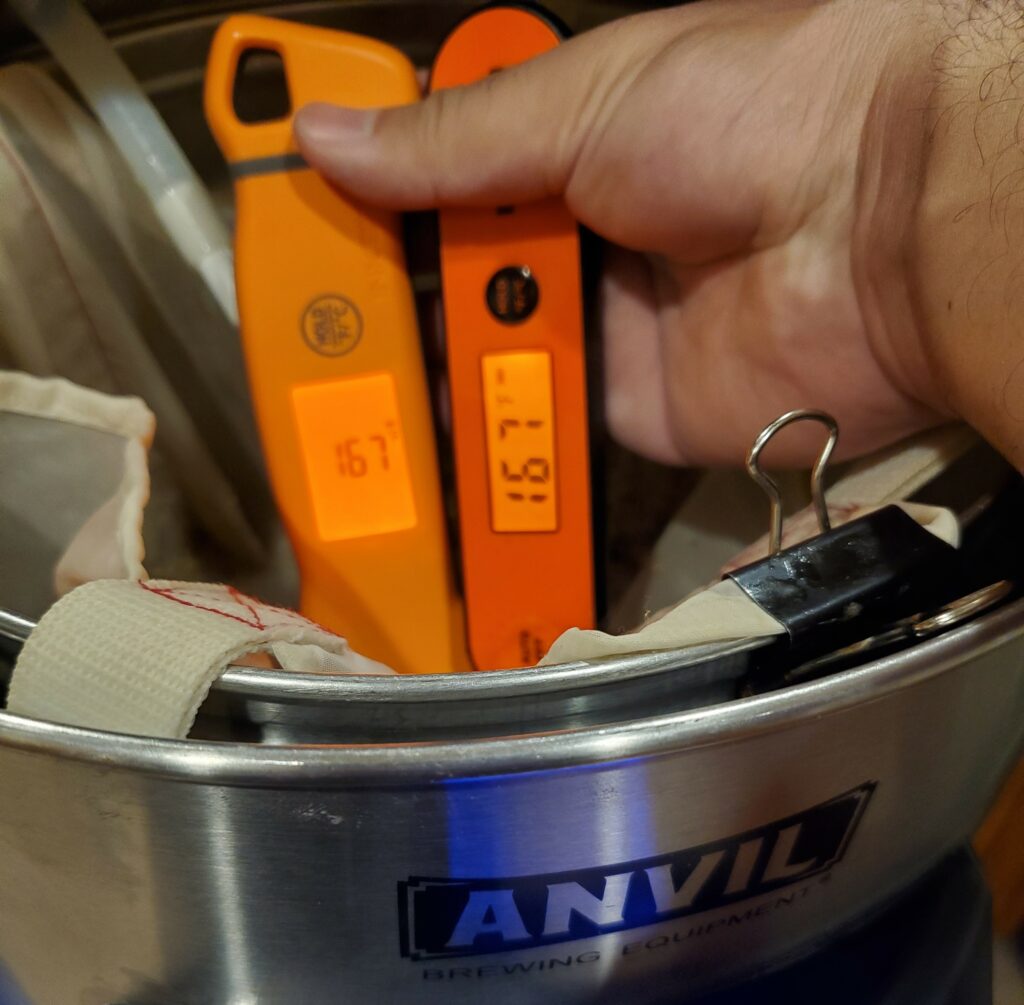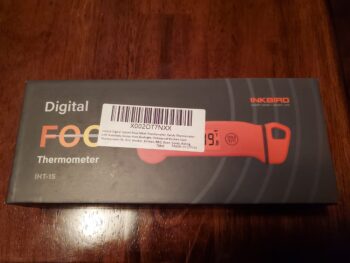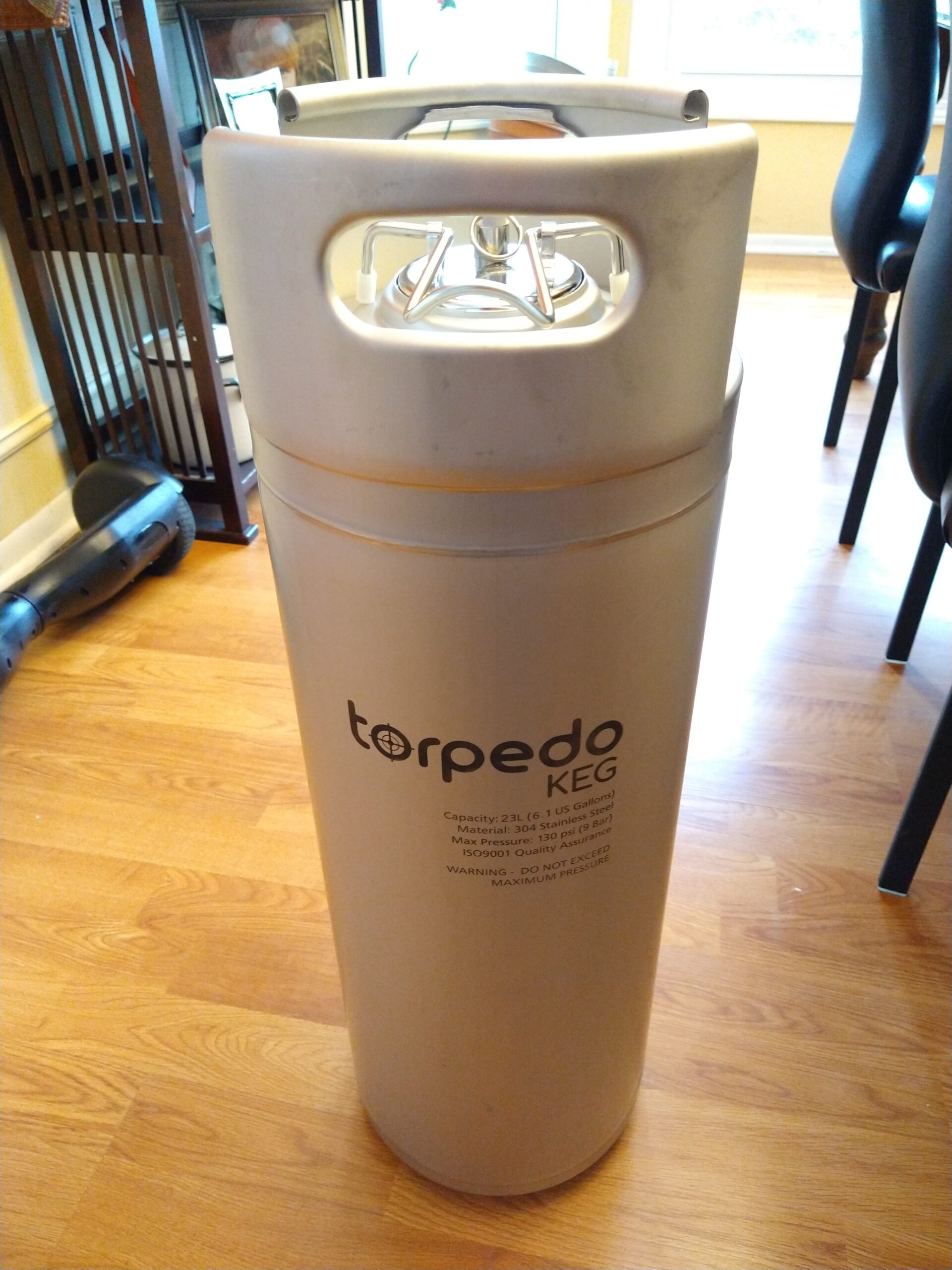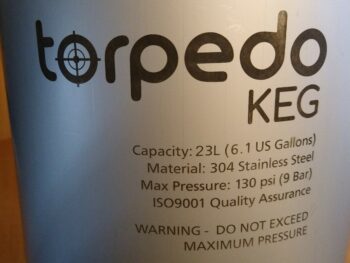
Hands on Review: Avid Armor CHAMBER Vacuum Sealer – seals mylar bags!

Why would you want a Vacuum Sealer for homebrewing?
Vacuum sealers are indispensable for storing hops. You can save money by getting in on bulk hop buys – See: Recent Hop Finds. Use your vacuum sealer to break these up and to preserve freshness. You can also store specialty grains in vacuum bags. Other uses include: storing base grains, partial dry yeast packs and storing and preserving other beer ingredients.
What’s a Chamber Vacuum Sealer?
A FoodSaver (or similar) is a standard home suction type vacuum sealer that relies on special bags. We generally call them… vacuum sealer bags. These bags are embossed or textured to create channels on the inside of the bag. Those channels allow a FoodSaver to draw out air and create a vacuum all while the machine is clamped down. When this process is done a heat strip seals the bag locking in the vacuum state.
A chamber style vacuum sealer does not rely on channeled bags. It evacuates the entire chamber and seals the bag. When this is done, prior to pressure equalization the bag does not look like it’s vacuum sealed at all. When pressure equalizes the bag immediately collapses and whammo, it’s sealed.
What are the Advantages of Chamber Vacuum Sealers?
- Generally speaking, these remove more oxygen than FoodSaver machines.
- Vacuum sealing wet or moist items is much easier. Since the entire chamber is evacuated, these aren’t prone to drawing out liquid like FoodSaver machines.
- Bag cost. The special bags required by FoodSaver are more complex to produce and can lead to higher costs. Smooth sided vacuum bags can be had for less. If you’re re-using Mylar bags your bag cost essentially goes to 0.
- One of the biggest benefits, to me, is being able to seal Mylar bags. Mylar bags have smooth sides and do not work with FoodSaver and similar. The lack of channels foils the process.
Why Mylar
Generally speaking Mylar bags consist of three layers. Two Mylar layers that laminate a center aluminum foil layer. This combination provides strength, flexibility and durability along with an extremely low Oxygen Transmission Rate (OTR). These bags also block potentially damaging light. Combine this with vacuum sealing and you’ve got an outstanding way to store food & more.
For homebrewer’s… Vacuum sealed Mylar bags are an excellent way to store hops and other oxygen sensitive materials. As a testament to this, many hop distributors distribute hops in Mylar bags. Sometimes those are vacuum sealed and sometimes they are nitrogen flushed.
Re-using packaging can be a big money saver. You’ll see in my review below that I re-use hop bags. Those cost me $0 and are an excellent vehicle for storing hops
I have a post on some techniques that I developed to seal Mylar bags with traditional vacuum sealers. That’s one of the most popular posts on Homebrew Finds, I’m guessing that many people that find that post are not homebrewers, but are interested in this because of the prohibitive costs of Mylar capable machines.
A note to non-brewers: Based on the popularity of our Mylar sealing post, it’s entirely possible that you don’t homebrew. If that’s you, most of the trials in this review focus on sealing hops. If you don’t brew A: Why not? Connect with Us and start! or B: Picture… other things instead of hops 🙂
In the past, chamber vacuum sealers have been very expensive. When I published my post on sealing Mylar bags back in 2011, they cost thousands of dollars. They were generally intended for commercial use and had price tags to match.
I’m happy to say some much more economical options have become available. Here’s a hands on look at Avid Armor’s USV20 Chamber Vacuum Sealer.
Hands on Review Avid Armor USV20 Chamber Vacuum Sealer
 The USV20 fresh out of the box
The USV20 fresh out of the box A look inside. It came with manuals, vacuum sealer bags, a quick start guide and a vac sealed toy avocado.
A look inside. It came with manuals, vacuum sealer bags, a quick start guide and a vac sealed toy avocado. A look at the contents
A look at the contents
Check Current Price & Availability, Review Continues Below:
- Avid Armor Chamber Vacuum Sealer Model USV20 Ultra Series, Compact Size Perfect for Liquid-Rich Wet Foods Fresh Meats, Marinades, Soups, Sauces and More. Vacuum Packaging the Professional Way << the model evaluated in this review – affiliate link, note that multiple variations of this product may be available, as such a different version may appear at this link
- Avid Armor Chamber Vacuum Sealer Model USV32 Ultra Series, Perfect for Liquid-Rich Foods including Fresh Meats, Marinades, Soups, Sauces and More. Vacuum Packaging the Professional Way – features a larger chamber – affiliate link, note that multiple variations of this product may be available, as such a different version may appear at this link
- The Avid Armor Store on Amazon – vacuum sealers, bags and more
- Avid Armor Chamber Machine Vacuum Pouches Size 10″ x 13″
- Chamber Machine Vacuum Pouches 8″ x 12″
- Avid Armor Chamber Machine Vacuum Pouches Size 6×12″
- Related: Search Amazon for “food grade Mylar Bags”
Note that multiple variations of this product may be available, as such a different version may appear at these links





 In the package. As of this posting, this comes in singles with the option to add a second on for a reduced cost. Check the product page to see if that’s still available.
In the package. As of this posting, this comes in singles with the option to add a second on for a reduced cost. Check the product page to see if that’s still available. A look down the jumper. You’ll notice a stainless steel bar. This jumper doesn’t have traditional poppets. Instead these bars take their place enabling connected ball lock QDs to open when connected. This is actually a really good feature because it means the jumper is open to the air when unused and can be clean, dried and sanitized.
A look down the jumper. You’ll notice a stainless steel bar. This jumper doesn’t have traditional poppets. Instead these bars take their place enabling connected ball lock QDs to open when connected. This is actually a really good feature because it means the jumper is open to the air when unused and can be clean, dried and sanitized.

 Bag o’ stuff
Bag o’ stuff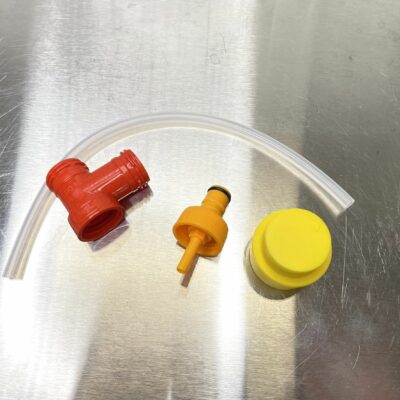 This is what you get with the basic pump. Tee, carbonation cap, pump and dip tube.
This is what you get with the basic pump. Tee, carbonation cap, pump and dip tube. I installed this on a 2L bottle. You’ll notice the carbonation cap has changed colors. I used one I already had (Kegland brand, just a different color), because I already has a dip tube trimmed to size and installed from a recent update to
I installed this on a 2L bottle. You’ll notice the carbonation cap has changed colors. I used one I already had (Kegland brand, just a different color), because I already has a dip tube trimmed to size and installed from a recent update to 
 Complete test setup
Complete test setup Ball Lock QD Installed on the pump assembly
Ball Lock QD Installed on the pump assembly It’s a little difficult to see but… it works. With some pumping, I got a slow steady stream of liquid. Keep in mind this is cleaning two 10′ lines at the same time.
It’s a little difficult to see but… it works. With some pumping, I got a slow steady stream of liquid. Keep in mind this is cleaning two 10′ lines at the same time. Add on a ball lock faucet and you’ve got a portable serving keg without paying for expensive CO2 cartridges. Before you email me/comment/etc… yes this will cause oxidation, I would not suggest this as a long term solution. Only for the occasion that you and your friends will be able to drink an entire growler in an evening. Oxidation won’t have enough time to become a factor. Use another solution for longer term applications.
Add on a ball lock faucet and you’ve got a portable serving keg without paying for expensive CO2 cartridges. Before you email me/comment/etc… yes this will cause oxidation, I would not suggest this as a long term solution. Only for the occasion that you and your friends will be able to drink an entire growler in an evening. Oxidation won’t have enough time to become a factor. Use another solution for longer term applications. Remove the tee, add a
Remove the tee, add a  Replace the pump with another carbonation cap, use a 2.5 liter bottle and… you have a 2.5 liter keg you can use in your kegerator!
Replace the pump with another carbonation cap, use a 2.5 liter bottle and… you have a 2.5 liter keg you can use in your kegerator!





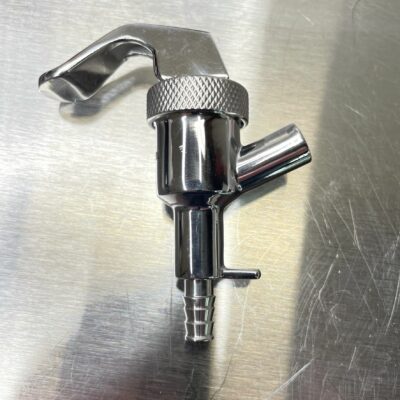
 The box. This is a “hand held” stainless steel faucet. It could also be called a stainless steel picnic faucet or stainless steel cobra faucet. It’s manufactured under MoreBeer’s
The box. This is a “hand held” stainless steel faucet. It could also be called a stainless steel picnic faucet or stainless steel cobra faucet. It’s manufactured under MoreBeer’s 

 A closer look at the handle and lid. This lid (like most ball lock style lids) is equipped with a manual PRV. Generally speaking… Both Ball Lock and Pin Lock style lids are the same dimension and are interchangeable. You can use a Ball Lock Lid on a Pin Lock Keg and vice versa. A big difference are the PRV (pressure relief valve) functions between the two styles. Both have automatic safety PRV valves. That is, if the pressure gets too high, both will automatically vent for safety reasons. The difference is in manual PRV functionality. Ball Lock Keg lids have a pull ring that allows you to manually vent the keg as you’d like. You may want to do that for the purpose of removing the keg lid or to vent excess pressure in an attempt to get down to a lower pressure. See:
A closer look at the handle and lid. This lid (like most ball lock style lids) is equipped with a manual PRV. Generally speaking… Both Ball Lock and Pin Lock style lids are the same dimension and are interchangeable. You can use a Ball Lock Lid on a Pin Lock Keg and vice versa. A big difference are the PRV (pressure relief valve) functions between the two styles. Both have automatic safety PRV valves. That is, if the pressure gets too high, both will automatically vent for safety reasons. The difference is in manual PRV functionality. Ball Lock Keg lids have a pull ring that allows you to manually vent the keg as you’d like. You may want to do that for the purpose of removing the keg lid or to vent excess pressure in an attempt to get down to a lower pressure. See: 


 Contents of Kit
Contents of Kit Description of Box Contents
Description of Box Contents

 Close-up of the box. Part number KL19859, Compatible with
Close-up of the box. Part number KL19859, Compatible with 

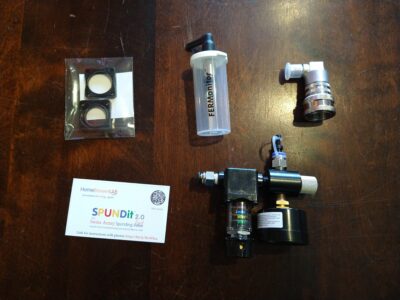
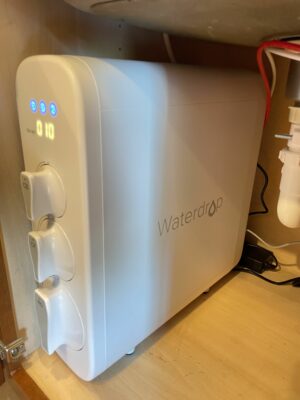

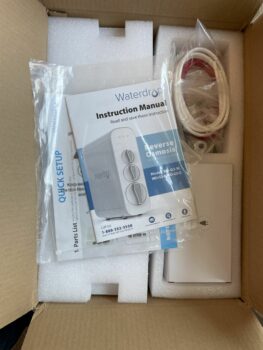
 The AC Power Adapter. This unit requires power. I believe that’s related to the tankless aspect of this filter’s design. My assumption is that It has a pressure pump that drives water through the filtration system to deliver a reasonable on-demand performance. The advanced filter tracking features and built in TDS sensor also require power.
The AC Power Adapter. This unit requires power. I believe that’s related to the tankless aspect of this filter’s design. My assumption is that It has a pressure pump that drives water through the filtration system to deliver a reasonable on-demand performance. The advanced filter tracking features and built in TDS sensor also require power.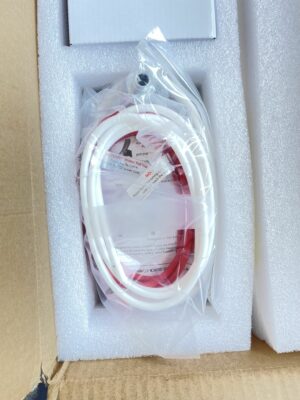 Required tubing and fittings
Required tubing and fittings















